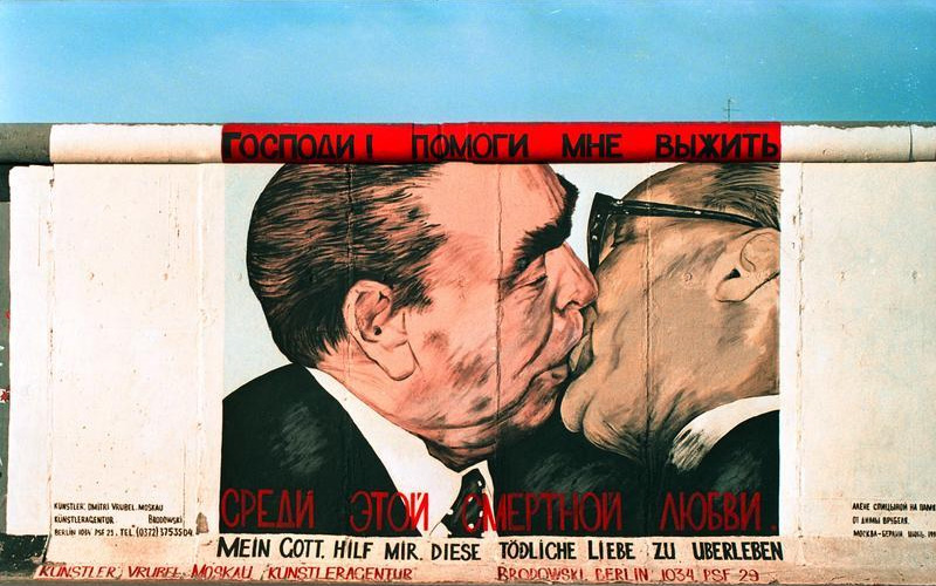Filed Under: Print > Visual arts > Dmitri Vrubel’s “My God, Help Me to Survive This Deadly Love,” 1990, Berlin Wall
Dmitri Vrubel’s “My God, Help Me to Survive This Deadly Love,” 1990, Berlin Wall

My God, Help Me To Survive This Deadly Love
Dmitri Vrubel’s (1960-) work on the Berlin Wall is among the most famous of post-perestroika graffiti. Vrubel based his creation on a 1979 photograph by Régis Bossu, which featured Soviet leader Leonid Brezhnev (1906-1982) and his DDR counterpart, Erich Honecker (1912-1994), locked in a passionate embrace celebrating socialist brotherhood. Vrubel’s ironic accompanying text, “My God, Help Me to Survive This Deadly Love,” suggests the precarity of surviving the leaders’ “love” and the political order it represents.
In a 2014 interview with Kommersant Weekend, Vrubel said the graffiti was inspired by his visceral revulsion at Bossu’s photograph, as well as by a comment by poet Dmitri Prigov (1940-2007), who proposed the idea of using the Berlin Wall as the artist’s canvas. Vrubel organized the act of creating the graffiti with the help of architect and sculptor Alexander Brodsky, who worked as a tour guide in Berlin at the time. Although the Western side of the Berlin Wall had long been a major site for graffiti, the same was not true of the Eastern side until 1989.
Although Vrubel (unusually for a creator of graffiti) attempted to get permission for his work from the East German Ministry of National Defense, the Ministry refused his petition. Instead, according to Kommersant Weekend, Vrubel signed a contract with a total stranger: “Some Scottish girl was standing there, handing out permits for painting—a total racket,” the artist recalled. Vrubel interpreted the permit as allowing him to create the graffiti image while also surrendering all authorial rights to it. According to Vrubel, the “Scottish girl” had reservations regarding the longevity of such a political graffiti, yet the image persisted—eventually becoming part and property of the East Side Gallery in Berlin.